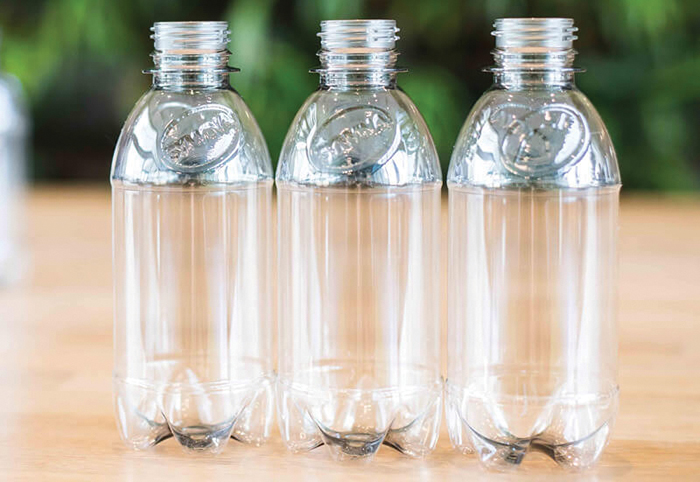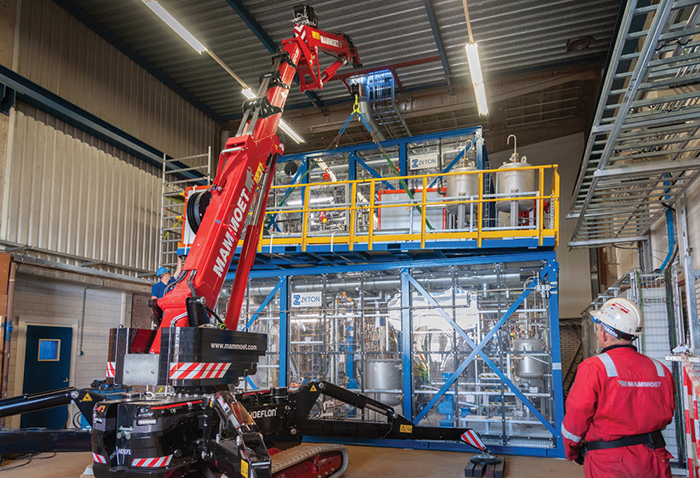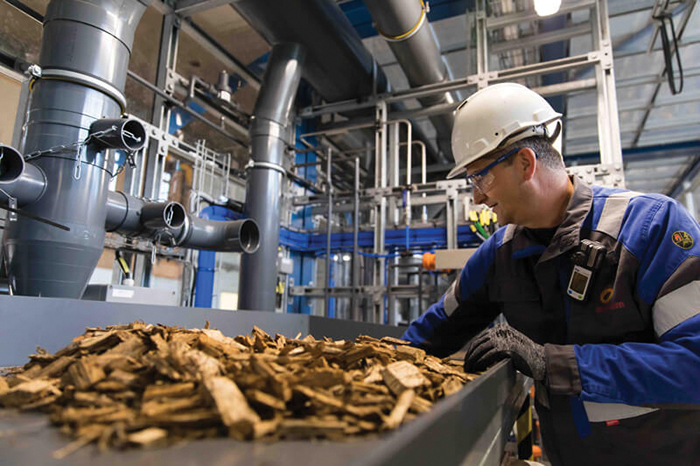Development of robust bio-based processes will be key to accelerating the transition to a circular economy, and there are many economic and technical considerations that will help companies experience success with bio-based innovations
It is no secret that the clock is ticking for companies in all sectors to meet environmental sustainability targets. With the world coming together to forge a more renewable economy, heads are turning to bio-based products and bioprocessing technologies for response and resolution. But in a market where innovation is the key to success, how can stakeholders at all levels ensure that new technologies are bringing real value?
Unlocking an understanding of best practices in bio-based products and processes will provide answers. However, this requires a number of factors to be considered deeply, including true insight into the drivers of change, strategic thought with regard to commercialization and an awareness of how mindsets must be adapted to respond to current climate needs. Environmental experts in the cutting-edge bio-based processing industry must be carefully enacting these best practices — as well as educating the world around them — so that well-meaning brands and consumers can make sure that they are truly investing in technologies and innovations that can accelerate the supply chain successfully toward a tangible, sustainable future.
Market drivers: Who holds the power?
It all starts with an understanding of market drivers. This will allow companies within the bio-based processing sector to deliver real value with the technology and the products they develop. Modern-day consumers are becoming more and more active in their demand for sustainability in all aspects of their lives, and are the main reason why brands are beginning to look for sustainable options. Previously, large consumer-facing brands contextualized their refusal to shift toward sustainable measures by claiming that it was too expensive and that consumers were not willing to pay for it. However, as many industrial sectors are learning now, this simply is not the case.
Results of a recent investigation [1] into the so-called “Green Premium” showed that consumers are driven to pay more for goods that they know are sustainable, with almost three-quarters of respondents stating they would be prepared to pay more for a proven sustainable package (Figure 1). Interestingly, according to the study, this behavior is partially motivated by guilt. Conversely, the study also found that there was a motivation from consumers who want to feel good about using brands that are clearly environmentally friendly. This phenomenon is known by the term “Seen to be Green” and is also driving consumers to pay a premium for sustainable products.

FIGURE 1. Studies have shown that customers will pay more for products that present a sustainable alternative to conventional materials, but manufacturers must be prudent in their selection of raw materials and end-use applications
Understanding this key driver for mass-market bio-based processing allows a business to tailor products to market needs. Consumers want products and technologies that make a positive impact on the world around them and also allow them to be visible about their support for sustainable measures. Correctly approaching this aspect of consumer demand is essential when it comes to commercialization of bio-based processes and technologies.
Commercialization
It is clear that there is an appetite for sustainable goods, but even with a strong vision for technology, those in the industry still need to navigate the waters of commercialization. It is prudent to realize that bio-based feedstock is currently the main alternative for fossil feedstocks to produce plastic materials. New technologies can take a very long time to scale up, and most bio-based technologies are currently at a relatively early stage. In fact, it was recently reported that less than 1% of the 350 million tons of plastics produced annually is currently bio-based [2].
Those in the bio-based processing industry have to plan the steps in between the demonstration stage of technology and full commercial scale — this is the stepping-stone toward being cost competitive, and is often the biggest hurdle in developing new technologies for bio-based processing (Figure 2).

FIGURE 2. Deployment of an intermediate-scale pilot plant is a crucial, and often difficult, step between the initial demonstration of a new bio-based technology and reaching full commercialization
Here, focusing on market needs is essential. For instance, trying to position a new bio-based material as a “green” version of a commoditized product, such as polyethylene terephthalate (PET), places great pressure on the new product in terms of price and volume. Due to these factors, it may be smart to initially limit a new material to an area where it can bring a unique benefit. High-performing bio-based technologies will employ a focused strategy, for instance targeting demanding packaging solutions for high-value applications, such as carbonated beverages, alcoholic beverages and fruit juice. Market experience and lower prices at larger production scales can then be used to expand into larger volumes at the right time.
Generally, it is always best to give the market something new. If you are simply offering a product where the performance is the same as what you hope to replace, then you have to compete on price right from the outset. It may seem like there is space in the market for commercial bio-based polyethylene, but when you look at the properties for such a material, it is similar to its fossil-based counterpart. This means differentiation can only happen through price, since the performance is the same. This is a trap all innovators should avoid falling into, unless they make sure to use the feedstock in the best possible way. Turning sugar into ethylene (via ethanol) requires at best 3.5 tons of sugar per ton of ethylene, as most of the mass (all of the oxygen) of the sugar is lost to CO2 and water in this process. Whereas converting sugar to ethylene glycol has a much better ratio of, at best, 1 ton of sugar per 1 ton of ethylene glycol, since all of the sugar’s mass is retained in the product. This is an example of a drop-in (meaning that the bio-based alternative is essentially identical to the incumbent material) bio-based product that makes perfect sense. Companies that produce ethylene glycol and are looking to expand production volumes would be drawn to this technology when purchasing assets to meet consumer demand. In such cases, this kind of drop-in technology is perfect for phasing out older, less economically and less environmentally friendly processes.
It is believed that plastic packaging production is expected to quadruple by the year 2050 [3], so moving forward, the industry should be focused on making sure that demand is met with alternative sustainable solutions. When companies are building new assets to handle the strain of this increasing demand, they are in a better position if the products they are producing are sustainable, cost-competitive and high-performing, all while meeting consumer demands. This is where new bio-based products and bioprocessing technologies can provide great value, and these factors should certainly be at the forefront even during early conceptual work related to new bio-based processes.
Bringing real value
A bio-based product or technology needs to do more than sell well, it needs to bring real environmental value to not only the industry, but to society as a whole. Consumers are educating themselves on environmental science more than ever before. However, there is still a great deal of confusion in some areas. This can make balancing consumer satisfaction with environmental value tricky.
Consumers often get fixated on the idea of biodegradability, thinking that perhaps a plastic that “returns to nature” is more environmentally friendly. While it is true that biodegradability is a concern, and improving this property would certainly help to combat plastic accumulation, collecting plastics with the goal of biodegrading them possesses an amount of flawed logic. Not only does biodegradation do nothing to cushion feedstock, but this process simply turns a polymer into CO2 — which is released into the atmosphere — and has no fertilizer or compost value.
To achieve the best of both worlds, the goal should be to create a plastic that is designed for recycling, which creates a circular economy of carbon, but which can also biodegrade in an acceptable time period if the product ends up in nature through what can be likened to “human error.”
In terms of product performance, it is key that biodegradation does not take place during normal use of a plastic — you only want this process to begin when it is exposed to the presence of composting bacteria and fungi.
To ensure this balance between recyclability and biodegradability, best practices would recommend the use of biodegradation analysis to test if products designed for packaging are “safe in nature.” In terms of biodegradability, products should be tested under both industrial composting conditions (air/oxygen at 58°C in soil) and under ambient conditions. The former of these should take around a year, but the latter can take several years. A long-term commitment to understanding the lifecycle of new technologies is extremely important, and this kind of analysis is vital to providing the industry with effective innovation.
When developing drop-in products that are chemically identical to fossil-based counterparts, end-of-life and use-phase analysis may not be relevant in all cases. Regardless of this, it is always vital to consider the impact on the environment that the production phase of a technology has. The lifecycle phases themselves consist of several smaller steps that include the extraction of the raw material, intermediate products and final manufacturing, which all count within the production phase. The impact assessment should also consider the energy consumption and resource depletion, as well as the effect of output emissions and waste on environmental concerns, such as climate change, summer smog, acidification and eutrophication (harmfully excessive nutrient content in bodies of water).
Currently, one of the great opportunities to be realized with bio-based processing is to define the feedstock that will be used as the gold standard. As an example, consider sugar as a replacement for petroleum. The polyolefins polyethylene, polypropylene and polystyrene, currently made from petroleum, do not contain oxygen, and so they are therefore not very logical polymers to make from sugars, where more than 50% of the molecular weight is oxygen. By focusing on glucose as a feedstock, the industry is driven to make materials that are better suited to a biomass feedstock, such as polyesters, polyamides and polyurethanes, which have better (closed-loop) recyclability, and in many cases, also better biodegradability than polyolefins. These novel bio-based plastics are designed for reusing and recycling, and to be “safe in nature” — where they degrade in a few years, rather than hundreds of years.
Glucose can be used sustainably as a feedstock by utilizing glucose from sources where it would normally be a waste product, such as forestry residue (Figure 3). This approach to industry waste is key to realizing a circular future.

FIGURE 3. Forestry waste residue is one example of a feedstock source that provides a more circular solution for the production of new
bio-based materials
In the future, industry can target one of the worst offenders when it comes to waste with the same philosophy — CO2. A new area of technology, carbon capture, utilization and storage (CCUS) brings the potential to harness CO2 — the largest contributor to global warming — either from the air or directly from industrial processes. When paired with an electrocatalytic platform, CO2 emissions can be used as a feedstock to develop high-value chemicals (and eventually liquid fuels for aviation and other end uses) to replace products previously made from fossil-based feedstocks. This would allow companies to offset their CO2 emissions and feed this waste product directly back into the industry to fuel different product streams.
An inspiring time
As governments impose more regulations on single-use plastics and the industry follows this transition from fossil to biomass feedstocks, we expect to see more innovation in the products we produce, with more exciting and surprising properties. These properties, coupled with dedicated lifecycle analysis, are the keys to commercializing effective technologies and increasing the demand for them.
We are truly beginning to see an uptick of bio-based processing for chemicals and polymers. However, leaders in the industry need to make sure that they are adopting best practices to drive successfully toward a sustainable future. It is the industry’s job to educate consumers and help them to use the power they have over brands to create a positive impact on the world, as ultimately it is their influence that will truly accelerate the transition to a fossil-free world. ♦
Edited by Mary Page Bailey
References
1. Zwicker, M.V., others, Applying an attitude network approach to consumer behavior towards plastic, Journal of Environmental Psychology, Vol. 69, April 2020.
2. European Bioplastics e.V., Bioplastics Market Data, www.european-bioplastics.org/market.
3. World Economic Forum, The New Plastics Economy: Rethinking the Future of Plastics, January 2016.
Author
 Gert-Jan Gruter is chief technology officer (CTO) at Avantium (Email: [email protected]; Website: www.avantium.com). He has held this role since 2004. At Avantium, his mission is to help develop large-scale novel sustainable technologies that, at full commercial scale, are superior to fossil-based technologies in both price and performance. Before his role as CTO, Gruter was responsible for setting up Avantium’s Chemicals Service Business and was also a group leader for New Catalyst Research at DSM. Gruter holds a Ph.D. in chemistry from the Free University of Amsterdam.
Gert-Jan Gruter is chief technology officer (CTO) at Avantium (Email: [email protected]; Website: www.avantium.com). He has held this role since 2004. At Avantium, his mission is to help develop large-scale novel sustainable technologies that, at full commercial scale, are superior to fossil-based technologies in both price and performance. Before his role as CTO, Gruter was responsible for setting up Avantium’s Chemicals Service Business and was also a group leader for New Catalyst Research at DSM. Gruter holds a Ph.D. in chemistry from the Free University of Amsterdam.